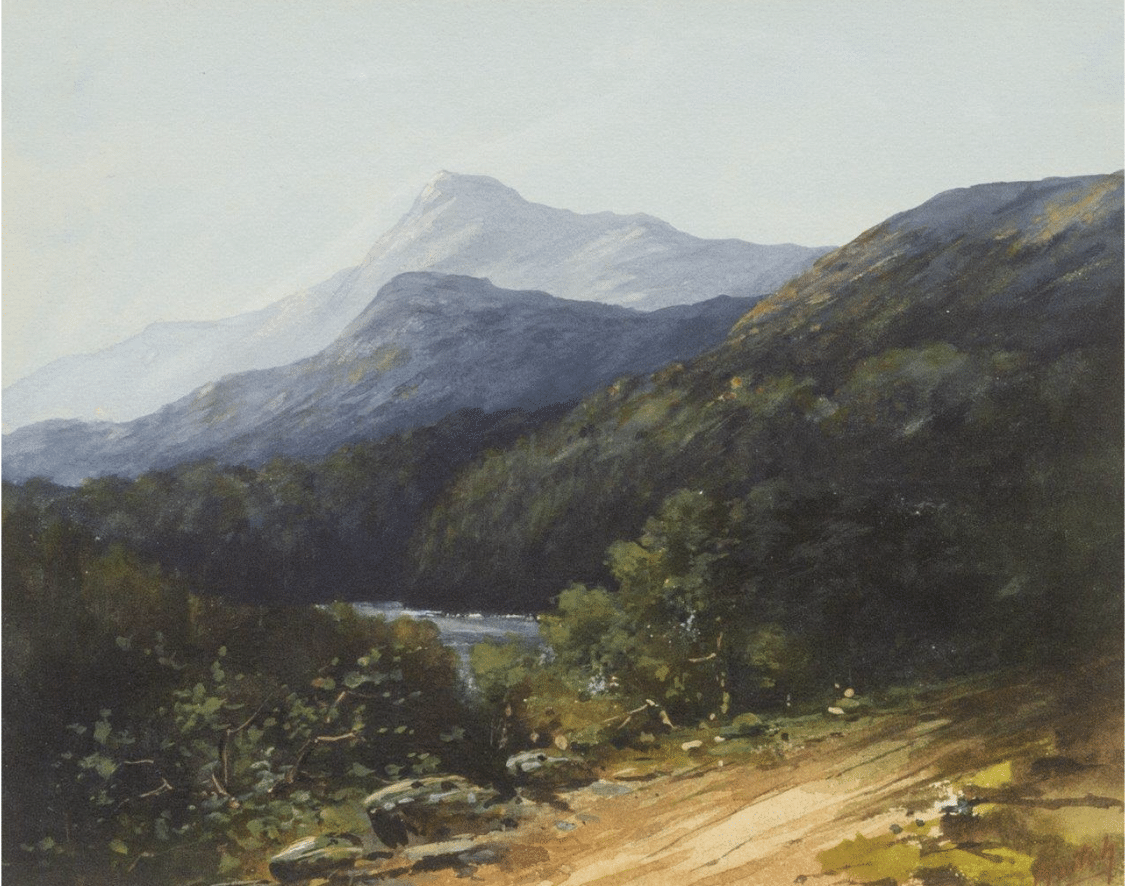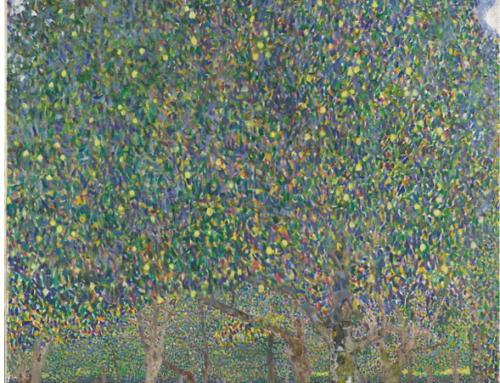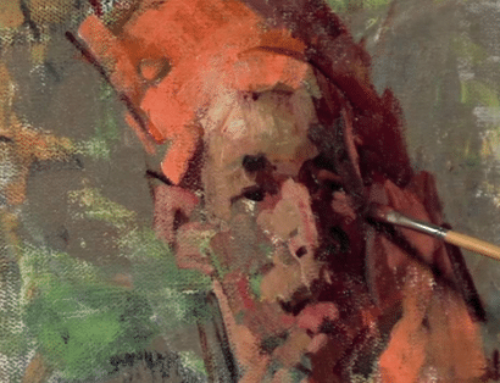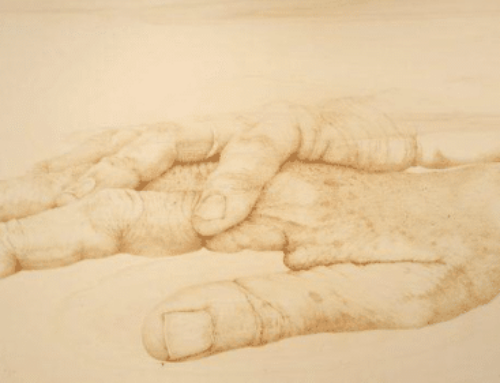At the southern end of the Appalachian Mountains, nestled between Tennessee and North Carolina, lie the Great Smoky Mountains. A natural fog lingers over them, giving them their iconic appearance and their name.
Great Smoky Mountains National Park is the most visited national park in America. In ridge upon ridge, for nearly a thousand square miles, a forest teeming with wild beauty recedes into the haze.
Such beauty didn’t go unnoticed for long. The rest of the country seems to have suddenly “discovered” the region during the early 1990s, at the tail end of the Hudson River period in American art, five artists made the region their specialty: Charles Krutch, Thomas Campbell, Rudolph Ingerle, Will Henry Stevens, and Louis E. Jones each created images that capture the enduring power of the Smokies.
Charles Krutch
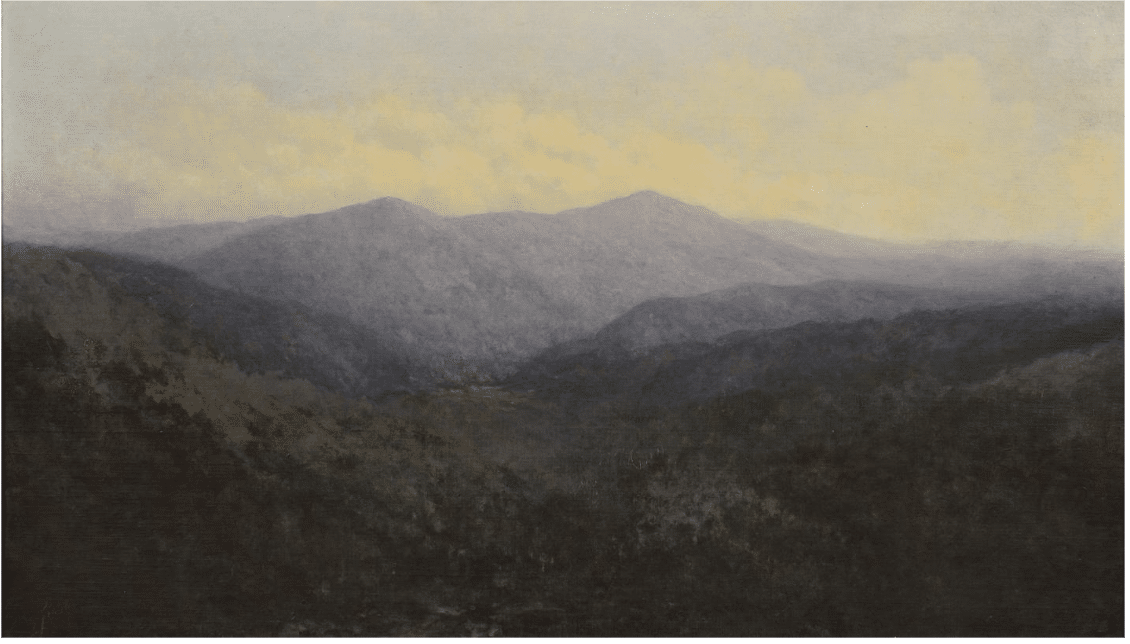
Charles Krutch, Smoky Mountains Landcape, oil, 20 1/2″ H x 35 1/2″ W, Frame: 28″ H x 43 1/4″ W
Charles Krutch is regarded as one of East Tennessee’s first painters to specialize in scenes of the Smoky Mountains. He earned the nickname “Corot of the South” for his soft, atmospheric watercolor and oil paintings of the mountain range that served as his sole focus, says the Knoxville Museum of Art. Totally untrained as an artist, he often applied thick layers of oil paint with brushes as well as his fingers in an effort to capture the subtleties of the changing moods of the mountains.
Rudolphe Ingerle
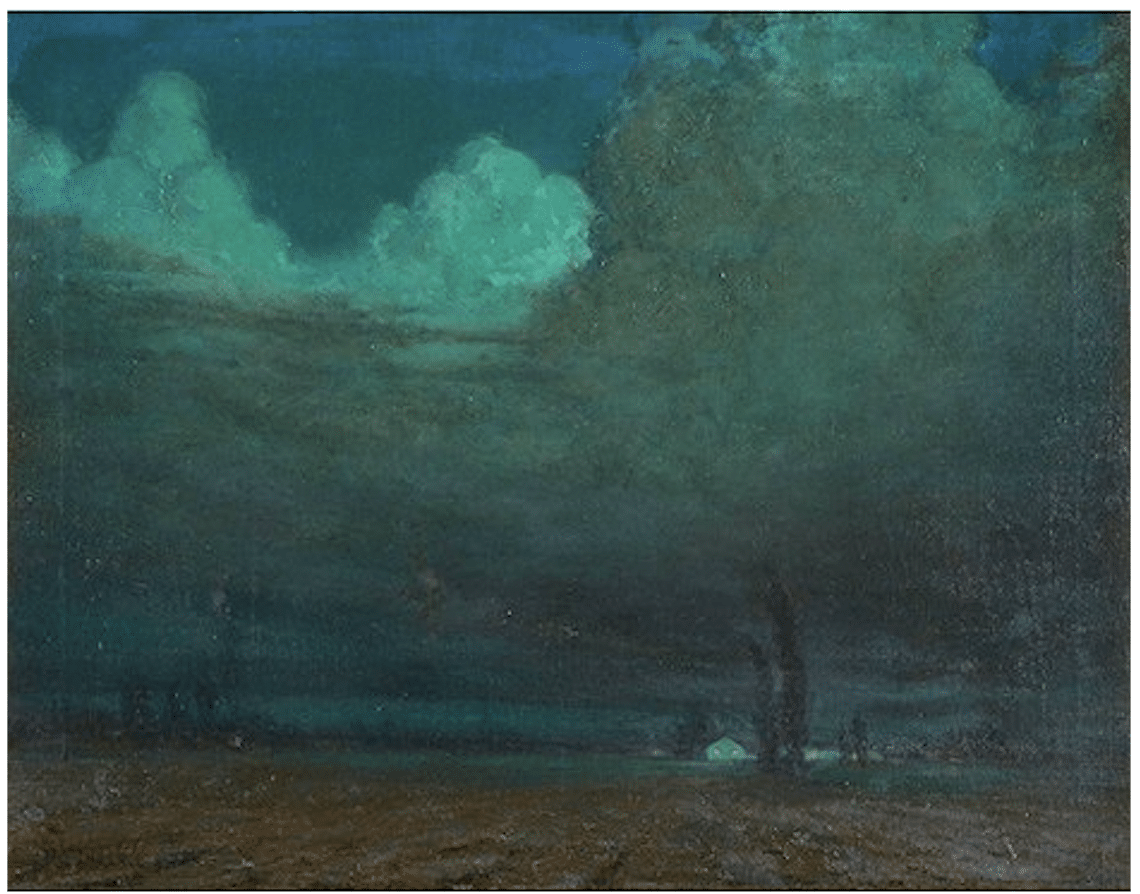
Rudolphe F. Ingerle, Before the Storm, oil, 55.88 x 71.12 in. (141.9 x 180.6 cm.)
Based in Chicago, Rudolph F. Ingerle arrived in the Smokies in the late 1920s and fell in love with the “most paintable” mountains. Ingerle’s landscapes display a masterful treatment of light, presenting breathtaking mountainsides that glow in all seasons and weathers, as we see in his large oil painting, Before the Storm (above). This painting combines the large format and “grand vistas” of the Hudson River School with the turn-of-the-century Tonalism that was taking its place.
Louis E. Jones
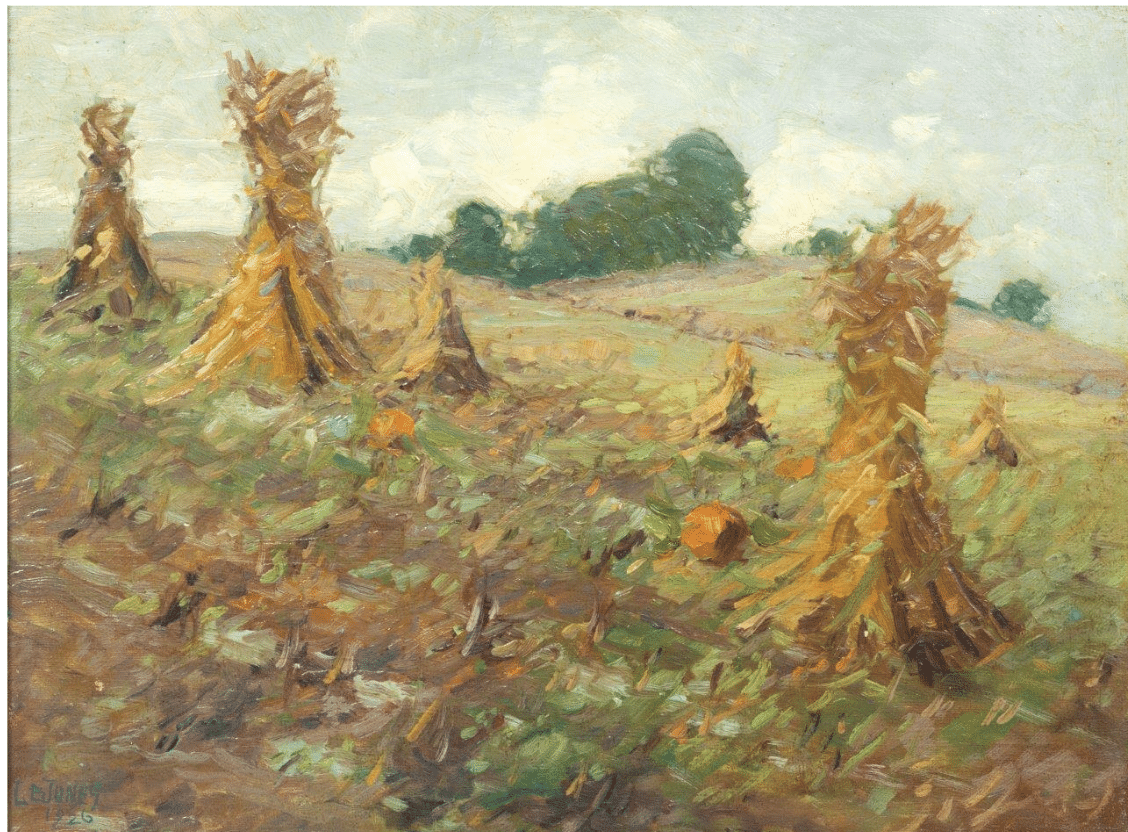
Louis E. Jones, Pumpkin Patch, oil on canvas (1929-1955)
Unsatisfied with the mountains near his home in Woodstock, New York, Louis E. Jones found in the Smokies the “spiritual significance” and “charm of mystery” he sought for his art.
Jones’s vibrant paintings explore progressive style and technique, ranging from impressionistic falling leaves to abstracted rocky mountainsides. Where other artists made only seasonal trips to the mountains, Jones stayed in Gatlinburg, TN for the rest of his life and is today best remembered not for his paintings but for his founding of the Cliff Dwellers, a studio and gift shop that became the cornerstone of an arts and crafts community still thriving in there.
Join the Plein Air Convention in the Smokies – May 20-24, 2024
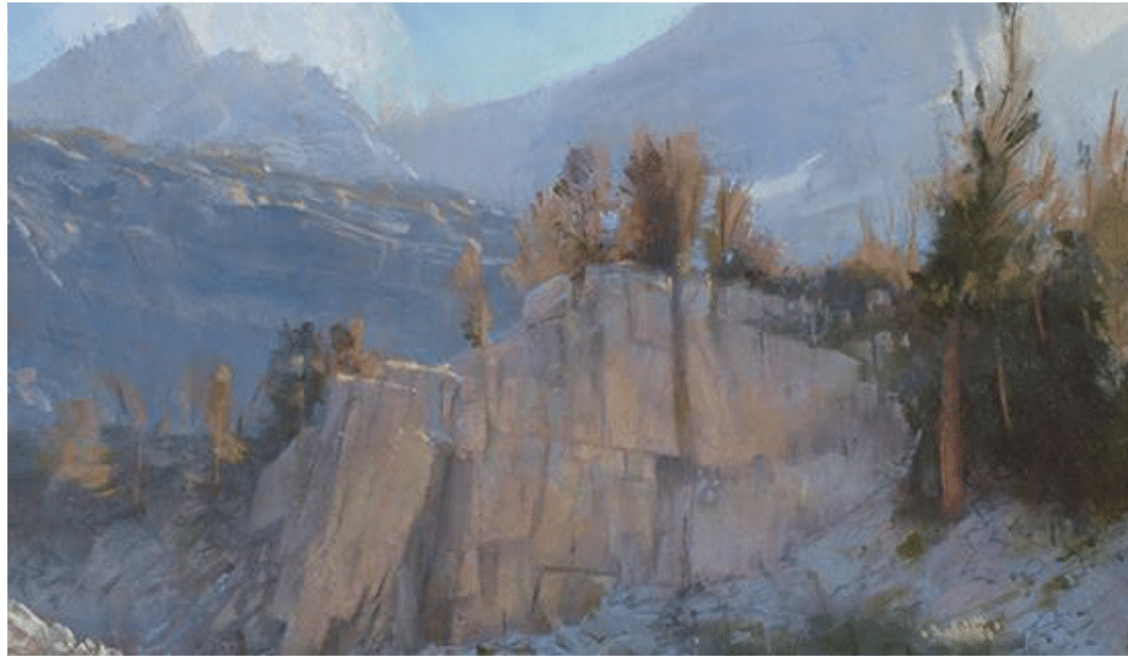
Bill Cone has a double life as a prolific professional plein air painter and a production designer and teacher for Pixar Animation. He studied painting at San Francisco State University. Bill is one of the dozens of outdoor painters who’ll be teaching and demoing at PACE 2024.
Every year, hundreds of outdoor painters gather for a five-day learning retreat at the Plein Air Convention & Expo (PACE) with workshops taught by the world’s top plein air artists. It’s the largest gathering of plein air painters on the planet and there is no other event like it. The convention is different every year. This year it’s taking place in the Great Smoky Mountains May 20-24, 2024 and over 65 master plein air painters have signed on to share their knowledge, their skills, and their advice about what’s working in the market right now. Sign up and learn more here.
By the way, you’ll find all of the information in today’s issue and much more, including the region’s historical and political context, at the Tennessee Museum’s online exhibition, Painting the Smokies: Art and the Making of a Nation.”
We’ll examine the work of Henry Stevens and Thomas Campbell in an upcoming issue.
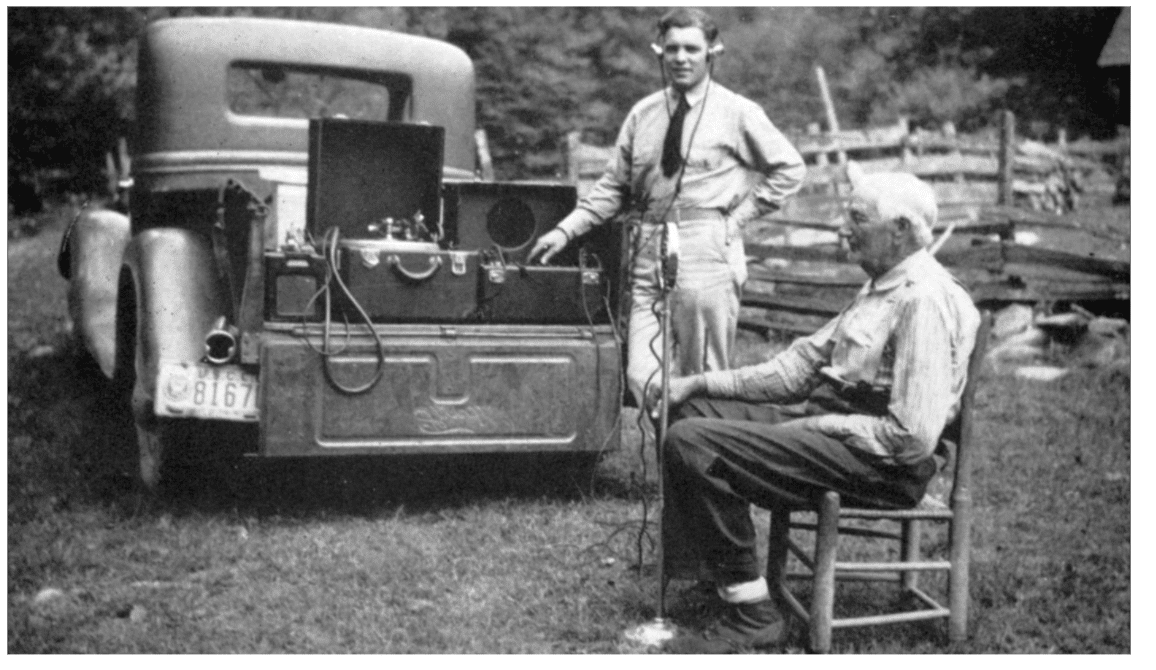
“Song catcher” Joe Hall recording Steve Woody in the Great Smoky Mountains.
And Now We Leave You with a Song…
Joseph S. Hall traveled throughout the Great Smoky Mountain region in the late 1930s and early 1940s, recording stories and songs to document the speech of the people who lived in the mountains. Folk music unique to this region of Appalachia would otherwise have been forever lost. In this snapshot, Steve Woody shares a bear hunting story with Joe and his “recording machine” at the Woody farm in Cataloochee in 1939. Source: NPS.gov

